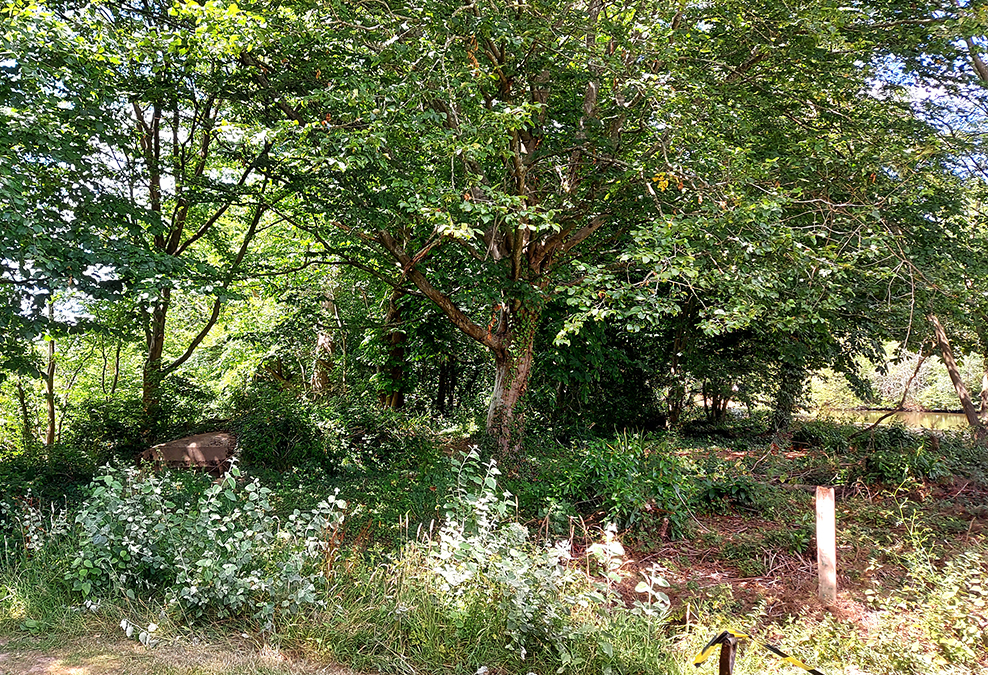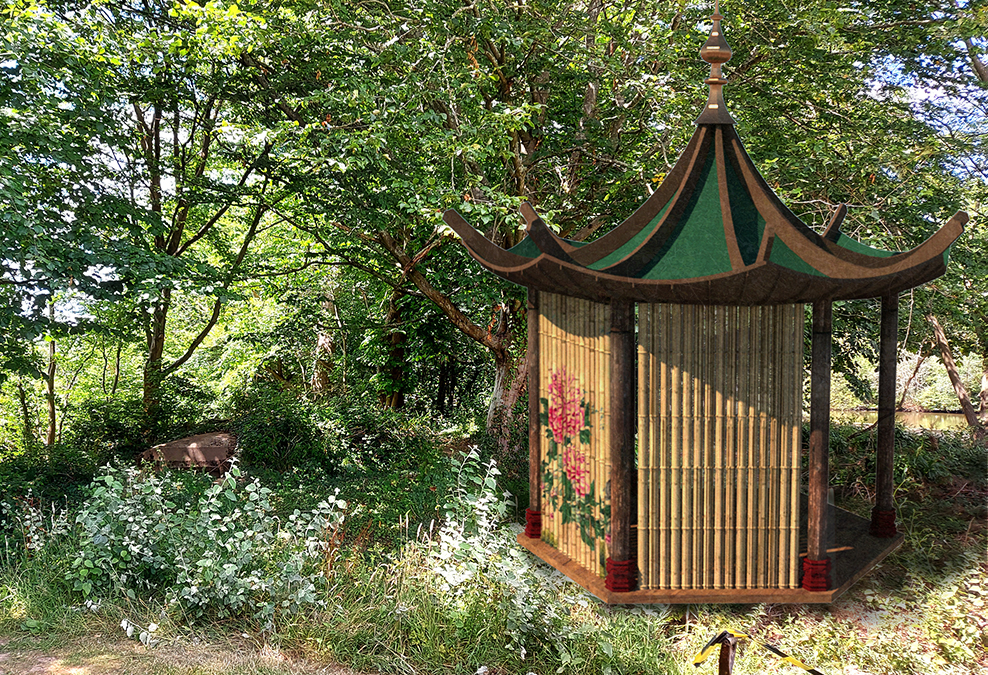Make sure your volume is on: "Sir George talks about the summer house"
Show transcript
It’s been a busy day, so let’s pause here by my Chinese Summer House…
It is the type of little structure that every Chinese gentleman has, you know, to help them survive the heat of a Chinese summer. It provides excellent shade, a place to sit, and if you site it properly, something restful or inspiring to look at. In this case, of course, my little lake. It is a lovely little spot to take tea with friends and visitors and relax, I think you’ll agree.
Aha, I see you’ve spotted the decorations… Those flowers painted on the bamboo blinds are Paeonia suffruticosa, or Chinese Tree Peony. The Chinese call it the ‘King of Flowers’, you know, and it is much admired by them as a symbol of honour, wealth and beauty, among other things.
They also use the bark of the roots as a form of medicine – their medicine is very different from ours, you know, but really quite effective for all that.
The verses on the screens are just something about seasons changing… it’s the kind of thing a Chinese bureaucrat would write in his spare time, and meditate upon as he admired the view. Chinese bureaucrats are like that, you know – they are expected to be highly cultured and artistic, as well as efficient.
Now I’m not saying there aren’t fellows in Whitehall who write excellent poetry on the side, but it’s hardly seen as being a requirement for getting the job, if you know what I mean.
Are you rested… good! Then let’s move on, plenty more to see!

